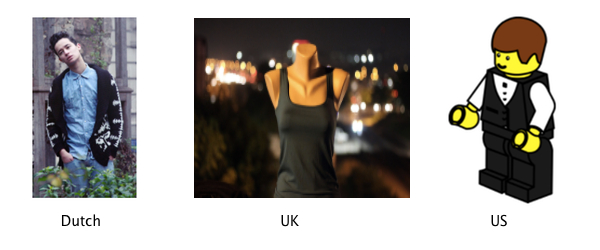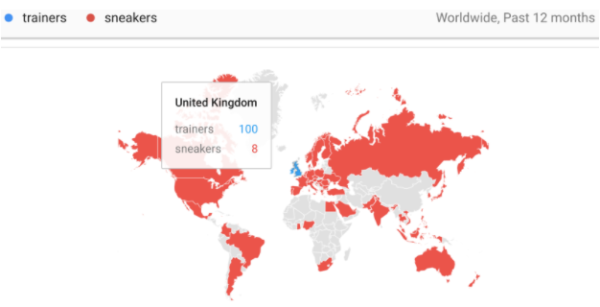Breaking up with false friends Copywriting for multilingual and multiregional sites

False friends are words that seem very similar but have a different meaning in different languages. Take the word sensible. It means reasonable in English but sensitive in French and Spanish. Sometimes, the same term can even refer to something completely different in two varieties of English. In this post, I will tell you why it is important for SEOs to be aware of this. I will also give some practical pointers on SEO copywriting for international websites.
Multilingual sites and SEO
As SEOs, it is our job to know what search terms people use. After all, that allows us to optimize our pages for those terms. This is a challenge in our native language as it is. If you have a multilingual site, however, keyword research and SEO copywriting can quickly become a minefield.
You should be aware of the terms people around the world use to find your products. This allows you to optimize your copy for any audience. Doing so will increase your number of potential customers. Moreover, you may just be able to snag an advantage over competitors by targeting audiences more specifically.
Multi-regional sites and SEO
Striking differences also exist between regions. Just because you speak the same language, doesn’t mean you use the same vocabulary. It is important to note that Google is improving at identifying synonyms. There is still a lot of work to be done, though. Less common languages and their variations are still a work in progress. This presents a great opportunity to gain an edge!
Of course, you can’t target every variation. The UK and U.S., however, may be different and sizable enough to target separately. The same goes for some varieties of Spanish and other common languages. Plainly put, not taking variations into account can also lead to missed opportunities.
So, what’s the worst that could happen?
Sure, the theory’s fine and dandy. What are the risks you need take into account, though, when writing copy for international websites? Well, if you use the wrong term, potential customers will not find what they are looking for. Hence, your bounce rate will increase. Obviously, your conversion rates will suffer as a consequence.
It’s an easy trap to fall into. Years ago, Joost helped a company to rank number one in Belgium for the Dutch word koelkast (refrigerator). One of Belgium’s official languages is Dutch. However, the various dialects spoken in Flanders, which is the region in Belgium where people speak Dutch, are quite different from the Dutch spoken in the Netherlands. Surprisingly, the company hardly converted. Turns out, the word koelkast is mostly used in the Netherlands. In Belgium, many consumers searched for the word frigo, which the Flemish borrow from French!
Because it’s not easy to get the right website ranking in the right market we decided to set up a Multilingual SEO training! In this course we’ll guide you step by step through all important multilingual SEO elements. Don’t miss it!
Multilingual and multi-regional sites: example case
Let’s look at an example case: the word vest. To keep things relatively simple, I’ll stick to Dutch, British English and American English. In this way, I can stress the importance of both multilingual and multi-regional variations.

An American vest is a British waistcoat. A British vest is called a tank-top or a-shirt in America. Incidentally, a tank-top is also a piece of clothing in the UK. Americans, however, call that a sweater vest. To top it off, the Dutch vest is either a cardigan or a hoodie with a zipper. Feeling confused? Don’t sweat it, whatever vest you’re wearing. Few examples are as complicated as this. Just know that veste means something different altogether in French and Spanish as well.
SEO copywriting for international sites: What can I do?
Researching your field and the potential risks it presents is crucial. An international clothing company will encounter more difficulties than a book store. Make sure you have a clear strategy. What audiences do you want to target and what vocabulary do they use? Invest time in researching terms you’re unsure about. You can use Google Trends to compare the frequency of search terms. It even gives you an overview of how popular each term is by region.

If you own or manage a bigger organization that has some money to spend, consider hiring a specialist or outsourcing copy translations. If you want to be cost-effective, you can also reach out to native speakers in your network. People may even volunteer to translate parts of your site if they like what you do.
The right copy for the right region and language
Writing SEO copy for international sites requires a lot of effort, especially for non-native speakers. Make sure you research what keywords particular audiences use for your products. Substitute your original copy for these terms to gain potential customers. By breaking up with false friends, you’re one step closer to realizing the potential of a multilingual site!
Read more: SEO Copywriting: the ultimate guide »


Discussion (12)